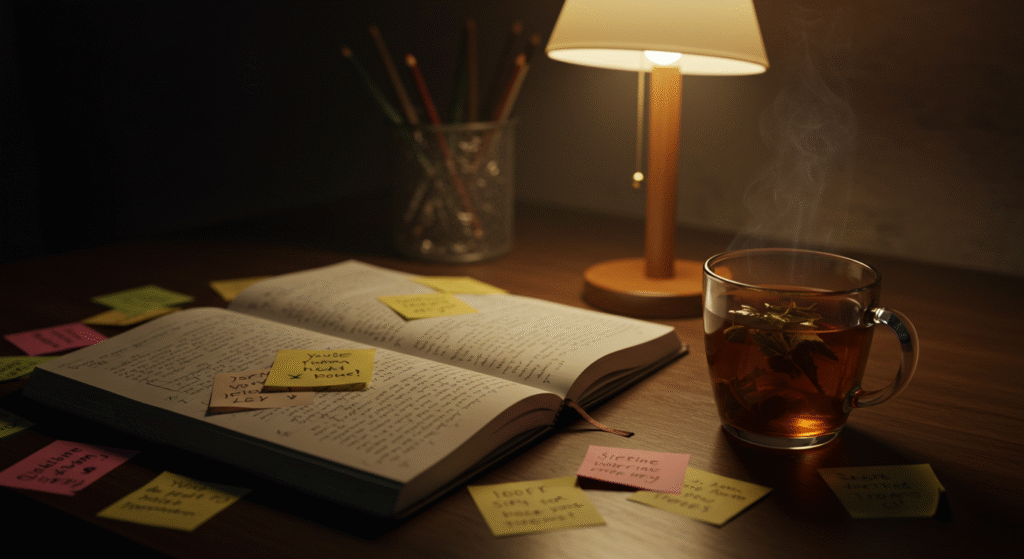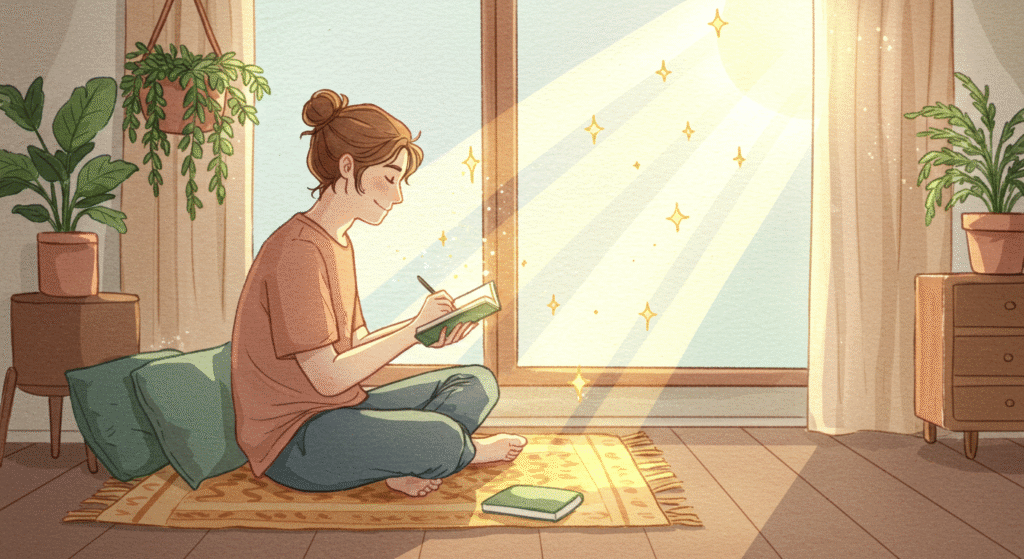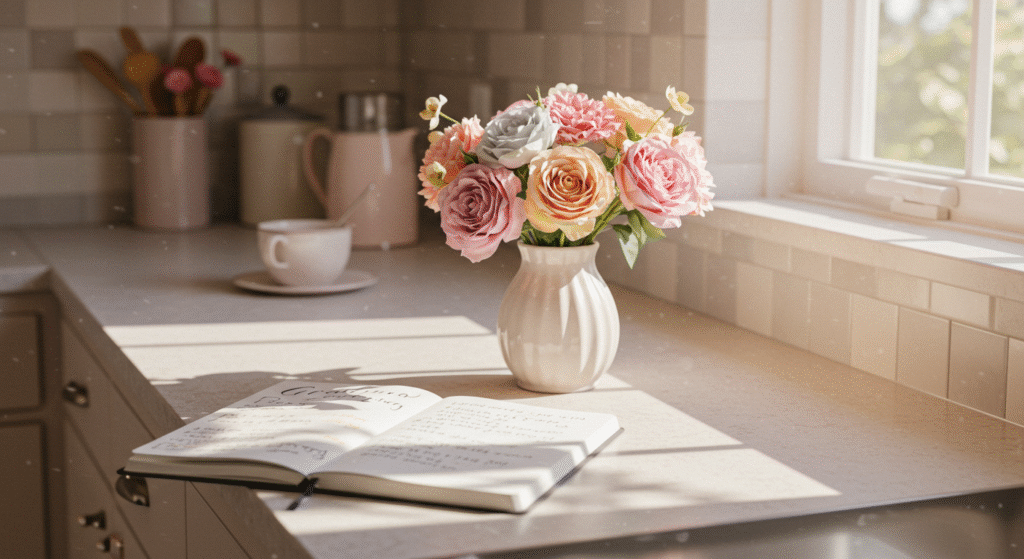Writing down your ideas, emotions, observations, or experiences is known as journaling. It can be a self-reflection exercise that gives you perspective and insight by allowing you to stand back from your life’s experiences and emotions.
You can use journaling to document many aspects of your life, create goals, reflect, and get ready for the day. When I write things down, especially in long form rather than typing, I am better able to process them.
It can perform a variety of functions and appear quite differently to various people at different stages of life. Is there a theme here? It is specific to you. You may write in your journal every day throughout certain seasons.You may only write once a week, twice a week, or once a month during other seasons. On some days, you may write for a short while, but on other days, you lose yourself in the writing.
You can keep your journal totally secret if you’d like. Another option is to save it and give it to your kids and grandkids; this will depend on the kind of journal you have.
One kind of diary that you might use to document and consider your dreams is a dream journal. You can record the specifics of your dreams in this kind of notebook, such as the persons, locations, and occasions you recall. Any related feelings or thoughts that arise during or after a dream are also recorded in a dream notebook.
Gaining understanding of your subconscious and recognizing recurrent themes, patterns, and symbols are the objectives of maintaining a dream journal. Dream journaling can help you better understand your subconscious thoughts and feelings while seeing reoccurring patterns in your dreams. It can also be used as a tool for self-reflection, self-discovery, and self-improvement. Additionally, dream journals can help with lucid dreaming and dream recall.

I adore establishing goals, you know! But despite all of my goal-setting, I never thought of it as journaling. However, I came across other mentions of it when doing research for this article. Setting, monitoring, and commenting on your personal and professional objectives as well as their challenges are all part of goal journaling.
It can be quite beneficial for self-motivation and accountability. Naturally, resources like the Powersheets from Cultivate, offer space to track your progress, reflection prompts, and goal rewriting. Any notebook can be used to record your goals, but I’ve discovered that I prefer having some structure and prompts to go to when I veer off course.

When you think about journaling, you may think of reflective journaling. It is the act of documenting and examining your feelings, ideas, and experiences. Diving deeper into your daily thoughts and feelings, recollections, habits, values and beliefs, and goals and objectives is made easier with this kind of journaling.
The details of your everyday life, such as your green smoothie for breakfast or the temperature of the air during your afternoon stroll, and how it affected you, don’t need to take up entire pages. That’s definitely an option, but you might also write about a difficult subject, make a list of positive things in your life, consider your religious practices, or investigate the reasons behind your reluctance to begin a new endeavor. Any reflection will do.
A creative and personal notebook that incorporates aspects of visual art and writing is called an art journal. You can express yourself, explore your feelings and ideas, and try out different art mediums and techniques by keeping an art journal.
An art journal includes visual components including drawings, paintings, collages, photographs, mixed media, and other artistic expressions, in contrast to traditional diaries that mostly concentrate on textual entries. Watercolors, acrylics, colored pencils, markers, pens, magazine cutouts, found objects, computer art, and even photographs can all be included in an art journal.
Freewriting, sometimes referred to as stream of consciousness writing, is just writing down your ideas, emotions, and anything else that comes to mind without editing yourself as you go. This kind of journaling, in contrast to other types, frequently includes speed-of-light scribbling, which helps to avoid pauses or any room for analysis.

For those who prefer more mainstream journaling, writing about their day, reflecting on ideas and events, or answering certain questions might bring them serenity. Contrarily, freewriting requires you to write from the heart, without pretension or preparation. Creative authors frequently employ the technique of freewriting to get their ideas out and to write without worrying about grammar or punctuation, knowing that the rest can be done later.
As someone who works with words for a career, I value the freedom to write down my deepest thoughts without feeling pressured to transform them into a story, stay on subject, give them structure, make them seem appealing to an audience that cannot see, or even make the words seem nice on paper. It’s a very freeing experience.
In terms of journaling, establishing a comparable area for flow helps me process through my writing and occasionally uncovers treasures I otherwise would not have found. It’s also a great morning routine that gives you an opportunity to clear your mind before starting your day.
Simply said, a travel journal is a private log of your feelings, ideas, and experiences while traveling. By recording your recollections of the locations you visit, the people you meet, and the adventures you have, travel journaling is a fantastic way to record and reflect on your travel experiences.
Depending on your goals and tastes, there are several ways to keep a travel journal. You have the option of starting a digital journal or blog or writing in a conventional notebook or sketchbook. In addition to documenting their experiences, some people use their travel journals to plan their trip, keep tabs on their spending, and arrange crucial information like reservations, flight information, and contact data for locals they encounter while traveling.
You can use a food journal as a tool to record your daily intake of food and beverages.
Along with recording particular foods and drinks, you can also write down:
How much food you ate, with whom you ate or by yourself, when and where you ate, and how you felt before, during, and after each meal or snack
Doctors and nutritionists may advise keeping a food record in order to better understand your eating patterns. In certain situations, a medical practitioner will also use them to identify potential dietary or product sensitivities.
Writing in your Bible is a visual religion activity known as Bible journaling It might be as easy as underlining a verse and putting a comment or idea in the margin, or it can be as intricate as painting an entire page so that the words are visually reflected. I find that keeping a Bible journal helps me concentrate when studying and retain the information I’ve read. It can also make a lovely present for kids or grandkids.
Writing your prayers in a notebook, like to a letter to the Lord, is a basic form of prayer journaling. Alternatively, you may try visual prayer, which is the visual faith approach. Adding a visual element to your prayers is the most basic form of visual prayer. Using a pen or colored pencils and a sheet of paper, you can color while silently or loudly praying. Simple.
When I don’t want to share the prayer with anybody, I use an unlined notebook, but occasionally I do this on an index card or a 5 x 7 piece of paper that I can mail to the person I’m praying for. To break up the space in that situation, I just draw lines across the page. I then fill in each space with my requests for prayer. Once I’ve written a request, I’ll take out a colored pencil and use it to color the space while I pray over it. It’s an easy method to maintain concentration while praying and to visually record your requests.

Every day I fight to become my own best friend and overcome my inner critic. Every day, I battle with my inner critic and try to be my own best friend. Before I give the day’s problems too much thought, I try writing down affirmations every day in my journal. It’s a means of adding compassion to my mornings.
Affirmations every day When you’re feeling overwhelmed or mired in the past, journaling might help you retrain your brain and find peace. As they were for me, this collection of daily affirmations may help others who are experiencing PTSD or who feel trapped in the past.
“Even if I don’t like what’s happening, the present is perfect.” This is my current favorite daily affirmations.
- Every day I am a different person.
- No one will feel better if I punish myself for the past.
- I shall be at peace as I heal at my own speed.
- I welcome new people, new experiences, and fresh life.
- To glimpse the rainbow of possibilities, open your eyes. (Alejandra Biehl, a licensed family counselor).
- My future is a wonderful present.
- I’m going to live with the prospect of anything positive happening.
- I decide to rediscover happiness and love.
- I welcome new experiences and am glad to be rid of the troubles of the past.
- I’m confident that what is rightfully mine will find me.
- Nothing that actually belongs to me in this world can be lost.
- You have yet to meet everyone who will love you.
- What if we get another present in the future?
- If I become less critical of myself, what do I fear will happen?
- Self-compassion is more useful to me than self-criticism.
Any type of journaling that encourages you to consider the blessings in your life is called gratitude journaling. You may see how God has been faithful in your life as you go back through the pages of your notebook, and it inspires you to find ways to be grateful. Why keep a gratitude journal? First of all, this is what God commanded. The thanks portion, of course, but perhaps not the journal itself.
Additionally, God only encourages us to do something because it is beneficial to us. God’s command is supported by science. According to studies, gratitude journaling has been linked to better relationships, better sleep, increased enjoyment, decreased stress, and enhanced wellness (Day One, Gratitude Journaling).

Making a track of your life by documenting everyday occurrences and your feelings about them is known as daily journaling. A daily notebook can be a fantastic gift to give to your children or grandchildren and is a terrific way to reflect on the many stages of your life. Incorporating reflective writing into your daily journaling routine could involve thinking back on your day’s events, your feelings about them, and your reactions to them.
Writing in a stream of consciousness is a personal writing approach in which you write your thoughts, ideas, and impressions as they occur to you, without any specific structure or order. You just write down your ideas as they come to you, just as you think them.
You can use stream of consciousness writing to convey emotion, think back on past events, explore what’s on your mind at any particular time, or come up with new ideas. This type of journal writing is always an honest and unvarnished portrayal of one’s feelings and ideas; it is never intended to be polished or edited.
Stream of consciousness writing, when utilized as one of the best journaling techniques, becomes a tool for self-expression and self-reflection, enabling you to write freely about your thoughts, feelings, and experiences without fear of criticism or condemnation. Writing in a stream of consciousness diary allows one to get personal insights, develop creativity, and explore their own thoughts.
It appears that most people view intuition in extremely binary terms: either you have it or you don’t. We all possess intuition, though, and just because some people are more adept at using it than others doesn’t mean you can’t develop yours. Since the mind is a muscle, we must exercise it in the same way that we exercise our bodies.
So, how can you make your intuition stronger? Realizing that you have it and that it protects and guides you is the first step. While intuition isn’t as important in today’s society as life or death, it does assist us in bridging the emotional and rational divide.
As with free writing above, morning pages are a similar methodology in that you can write whatever you want. The obvious difference here is that where you might engage with free writing at just about any time of day, morning pages are intended for the morning.
The idea of morning pages is to wake up and start writing without doing anything else (that includes checking email and social media). It is hoped that in this more vulnerable and less guarded state, you can discover more about yourself than you might otherwise be willing to give away when you have achieved full consciousness.

As you process these concepts, keep in mind that there is no right or wrong way to journal—just the method that feels true to you. There is a fresh journaling concept for everyone, ranging from creative writing and audio recordings to everyday musings and illustrations. Attempting a novel journaling concept could help you learn something new about yourself or broaden and enhance your journaling practice. Your diary is always a private place where you can experiment with different methods, strategies, and ideas for documenting your life. Have fun keeping a journals

